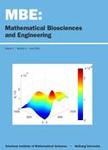版权所有:内蒙古大学图书馆 技术提供:维普资讯• 智图
内蒙古自治区呼和浩特市赛罕区大学西街235号 邮编: 010021

作者机构:Department of Mathematics and Applications University of Naples Federico II via Cintia NaplesI-80126 Italy Department of Mathematics University of Addis Ababa Addis Ababa Ethiopia
出 版 物:《Mathematical Biosciences and Engineering》 (Math. Biosci. Eng.)
年 卷 期:2025年第22卷第5期
页 面:1185-1205页
核心收录:
学科分类:0303[法学-社会学] 07[理学] 0701[理学-数学] 070101[理学-基础数学]
基 金:We sincerely thank the editor and reviewers for their careful reading and insightful comments which have greatly helped improve our manuscript. This work has been performed under the auspices of the Italian National Group for Mathematical Physics (GNFM) of the National Institute for Advanced Mathematics (INdAM). This research was supported by EU funding within the NextGenerationEU\u2014MUR PNRR Extended Partnership initiative on Emerging Infectious Diseases (Project no. PE00000007 INF-ACT). B.B. also acknowledges PRIN 2020 project (No. 2020JLWP23) \u201CIntegrated Mathematical Approaches to Socio\u2013Epidemiological Dynamics\u201D
主 题:Population dynamics
摘 要:Here, we considered Holling functional responses, a core concept in population dynamics, and discussed their potential interpretation in the context of social epidemiology. Then, we assessed which Holling functional response best represents the vaccination behaviour of individuals when such a behaviour is influenced by information and rumours about the disease. In particular, we used the Holling functionals to represent the information-dependent vaccination rate in a socio-epidemiological model for meningococcal meningitis. As a field case test, we estimated the information-related parameters by using official data from a meningitis outbreak in Nigeria and numerically assessed the impact of the functionals on the solutions of the model. We observed significant inaccuracies on parameter estimates when either Holling type I or Holling type III functional were used. On the contrary, when the Holling type II functional was employed, epidemiological data were well reproduced, and reasonable values of the information parameters were obtained. Given the socio-epidemiological interpretation of the Holling type II functional, this means that the rate at which susceptible individuals come into contact with information may be assumed to be constant and that the time needed to handle the available information cannot be neglected. © 2025 the author(s)